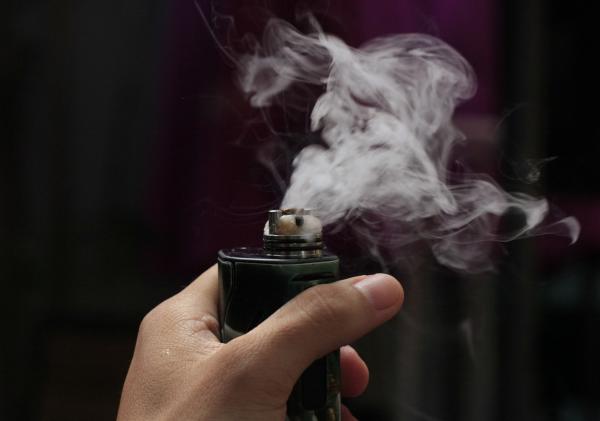You know someone is losing an argument when they try to shift the topic of the debate. There is no better example than the public health establishment's foolish campaign against vaping. Case in point: a just-published research letter in JAMA has found that “e-cigarette use among adolescents may have countered” some of the benefits of the decades-long decline in teen smoking. The study was accompanied by the usually uncritical media coverage in major outlets like US News and World Report:
"Electronic cigarette use is driving a rise in the proportion of young people who try but fail to quit using nicotine, a new study indicates … Lead study author Richard Miech, a research professor in the University of Michigan’s Institute for Social Research, says e-cigarettes are a potential threat to the progress made in recent decades in decreasing nicotine use among youth.”
Nonsense, every word of it, and the study itself was no better. The misdirection began in the second sentence of the research letter:
“The prevalence of lifetime adolescent cigarette use has declined from 57% in 1997 (the year before the Master Settlement Agreement of 1998 that prohibited marketing of cigarettes to children) to 16% in 2020. However, e-cigarette use among adolescents may have countered some of this decline in nicotine use and its potential effects on health.”
In case you missed the sleight of hand, the authors shifted from declines in cigarette smoking to decreases in nicotine use. This is misleading because most adolescent vapers were cigarette smokers who have transitioned from a very dangerous product, combustible tobacco, to a far less harmful alternative in electronic cigarettes. ACSH opposes teen use of any nicotine-containing product. But as I've argued previously, we have to be honest about what the data show.
Complaining that e-cigarette use has “countered” the drop in teen smoking wrongly suggests that non-smoking adolescents are developing a nicotine addiction via vaping. This is false, inaccurate, incorrect, dishonest—use whatever term suits you. The evidence does not support the “teen vaping epidemic” mythology perpetuated by public health researchers who should know better.
According to the CDC's National Youth Tobacco Survey, just three percent of teens vape daily, and the vast majority are former smokers. Only one percent are current e-cigarettes users with no history of tobacco use, and overall teen vaping has declined 42 percent in the last year alone. [1] Keep these numbers in mind as we move forward.

Neurobiologist Dr. Charles Gardner gives the teen vaping data some needed context.
Back to the research letter:
“Analyses centered on the questions 'Have you ever tried to stop smoking cigarettes and found that you could not?' among ever smokers (asked between 1997-2020) and 'Have you ever tried to stop vaping nicotine and found that you could not?' among ever e-cigarette users (asked in 2020 only). Response categories were 'yes' or 'no.' Based on responses to these 2 survey questions, a variable was coded identifying a failed quit attempt for either combustible cigarettes or e-cigarettes.”
My colleague Dr. Chuck Dinerstein employs the term “Mathmagic” when dissecting questionable epidemiological studies. The above paragraph contains the raw material for Mathmagical calculations, because a two-question survey cannot possibly provide a realistic assessment of anyone's behavior, especially that of teenagers—who are known to misreport information related to their risky habits. No advanced statistical footwork can compensate for flawed data.
Moreover, the researchers only had one year's worth of evidence on teen vaping from the Monitoring the Future survey, and only for a tiny segment of their sample. Out of 815,690 respondents, just 3,050 reported “lifetime” vaping. [2] Of those individuals, 365 (4.12 percent) reported at least one unsuccessful quit attempt. That means their conclusion—the prevalence of unsuccessful quit attempts in 2020 was higher than in each of the previous 13 years—hinges on the self-reports of 365 teenagers.
The good thing about giant data sets is that they make epidemiological studies with flashy conclusions easy to conduct. The downside is that those studies are often useless. This research letter perfectly illustrates why. Teen vaping is undesirable; it's also declining. Let's move on to a public health problem that really impacts adolescents, of which there are plenty to choose from.
[1] “Current use” of e-cigarettes is a dubious statistic because it includes individuals who have vaped at all in the last 30 days. It combines teens who may have experimented once with those who are actually regular vapers.
[2] “Lifetime” or “ever" e-cigarette use, the terms were utilized interchangeably in the letter, is similarly misleading. It doesn't account for how much or how often someone vapes. See this article for more on that.




